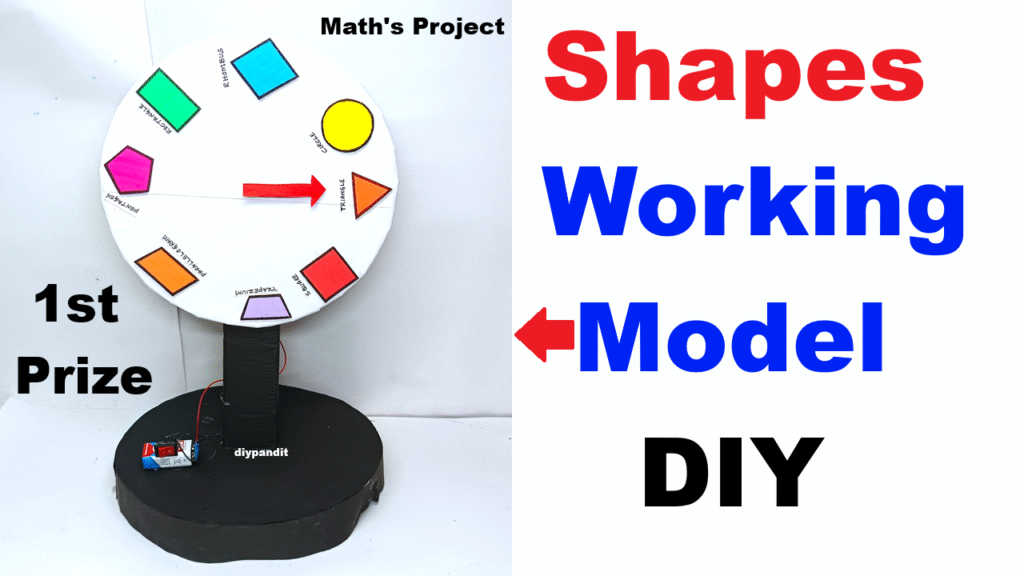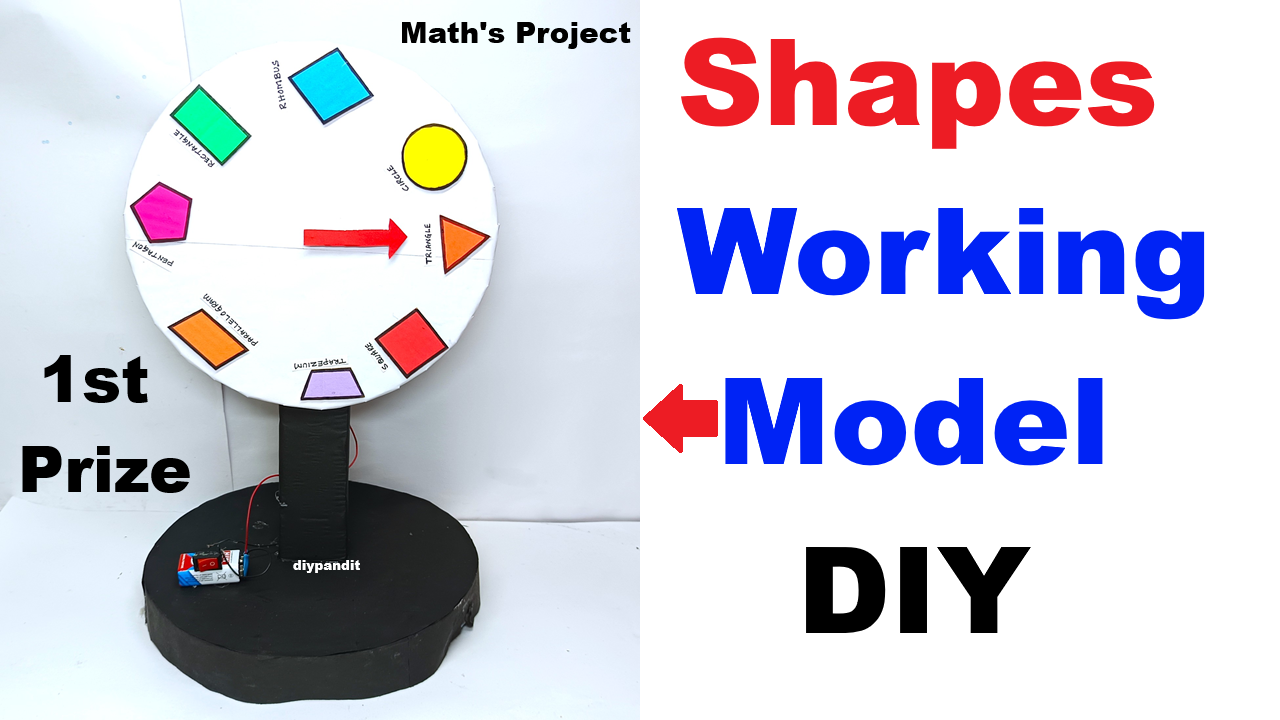“Hello everyone!
Welcome to my maths working model project video.
Today, I’ll be showing a fun and interactive rotating shapes model.
This model uses DC motor and switches to display different 2D shapes like square, triangle, circle, and more — each shape appears when I press a switch!”

Objective of the Project
“The goal of this project is to help students learn and identify basic geometric shapes in an engaging way using simple electronics.
Instead of just drawing shapes on paper, we are using a motorized system that shows one shape at a time when a switch is pressed — making it more visual and interactive.”
Materials Used
“I have used the following materials for this model:
- A cardboard base for structure
- A small DC motor
- Multiple shape cutouts: Circle, Square, Triangle, Rectangle, etc.
- Wires, battery, and switches
- A rotating disc or shape carousel mounted on the motor
- LED (optional) to indicate which shape is active
The DC motor rotates and brings one shape in front each time we press a switch.”
How It Works
“Let me show you how the model works:
- The shapes are attached around a rotating disc which is fixed to the DC motor.
- Each switch is connected to the power source and controls the motor.
- When I press Switch 1, the motor rotates and stops at the circle.
- When I press Switch 2, it rotates further and shows the square.
- Similarly, Switch 3 shows the triangle, Switch 4 shows the rectangle, and so on.
- You can also connect LEDs or a buzzer to highlight which shape is currently active.
This setup uses electrical switching and mechanical movement to display one shape at a time. It’s great for interactive learning in classrooms.”
It’s useful in Maths class, STEM learning, and project exhibitions.”
Conclusion
“Thank you for watching my maths rotating shapes model using a DC motor and switches.
This project shows how simple electronics can make learning fun and interactive.
I hope you liked the idea. If you did, please try it yourself and share your version too!
Let’s make maths exciting!”

